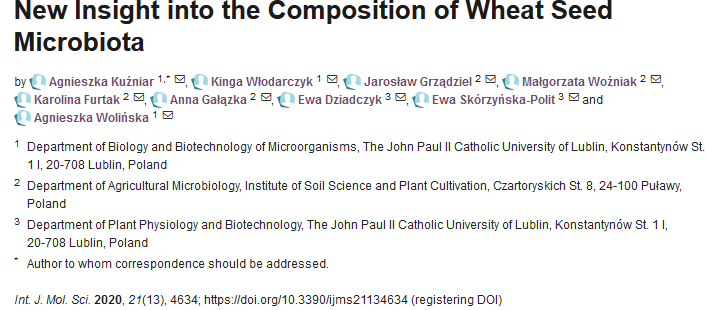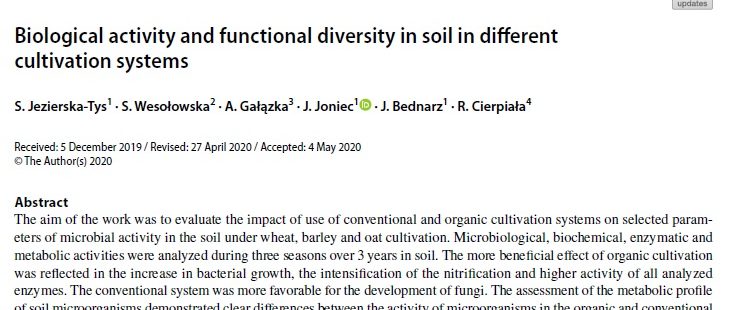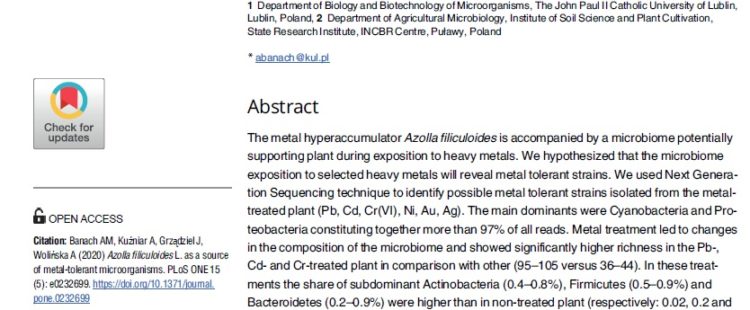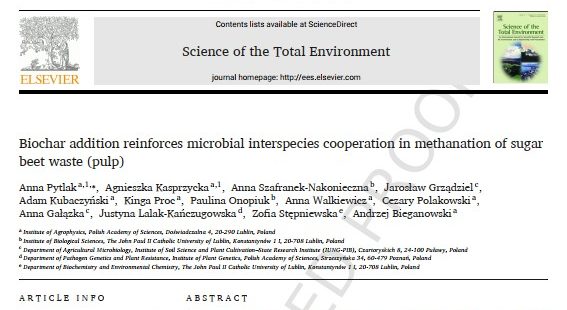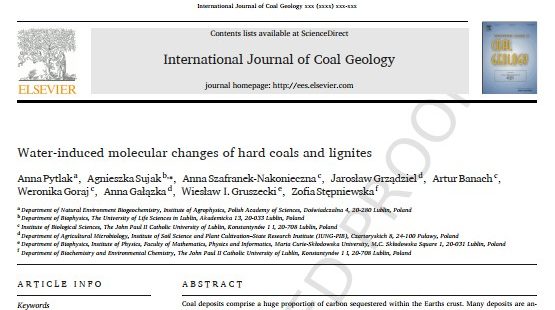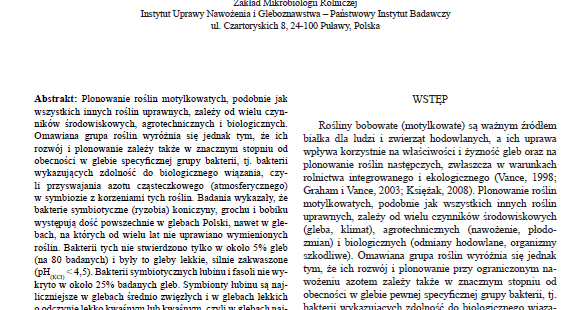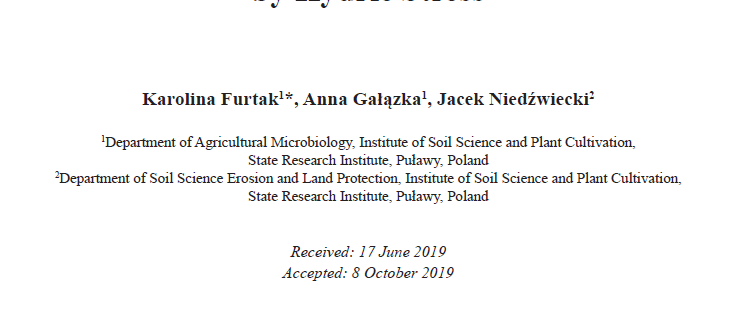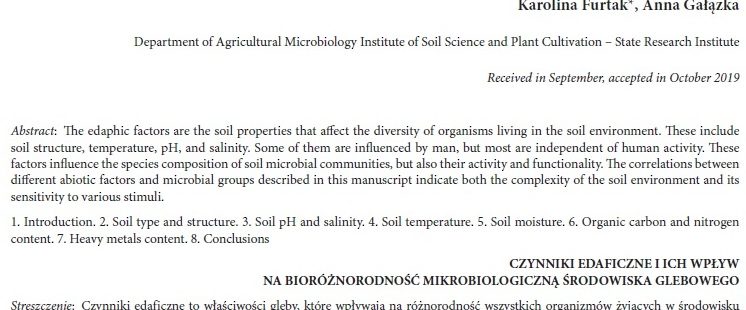Kuźniar A., Włodarczyk K., Grządziel J., Woźniak M., Furtak K., Gałązka A., Dziadczyk E., Skórzyńska-Polit E., Wolińska A. (2020): New insight into the composition of wheat seed microbiota. Journal of Molecular Sciences, 21(13), 4634 (140 pkt. MNiSW, IF = 4,556)
